A SELECTION OF SOME OF THE PLANTS INTRODUCED BY ERNEST WILSON THAT CAN BE SEEN IN THE GARDEN.
- Click on an image for its name and description -
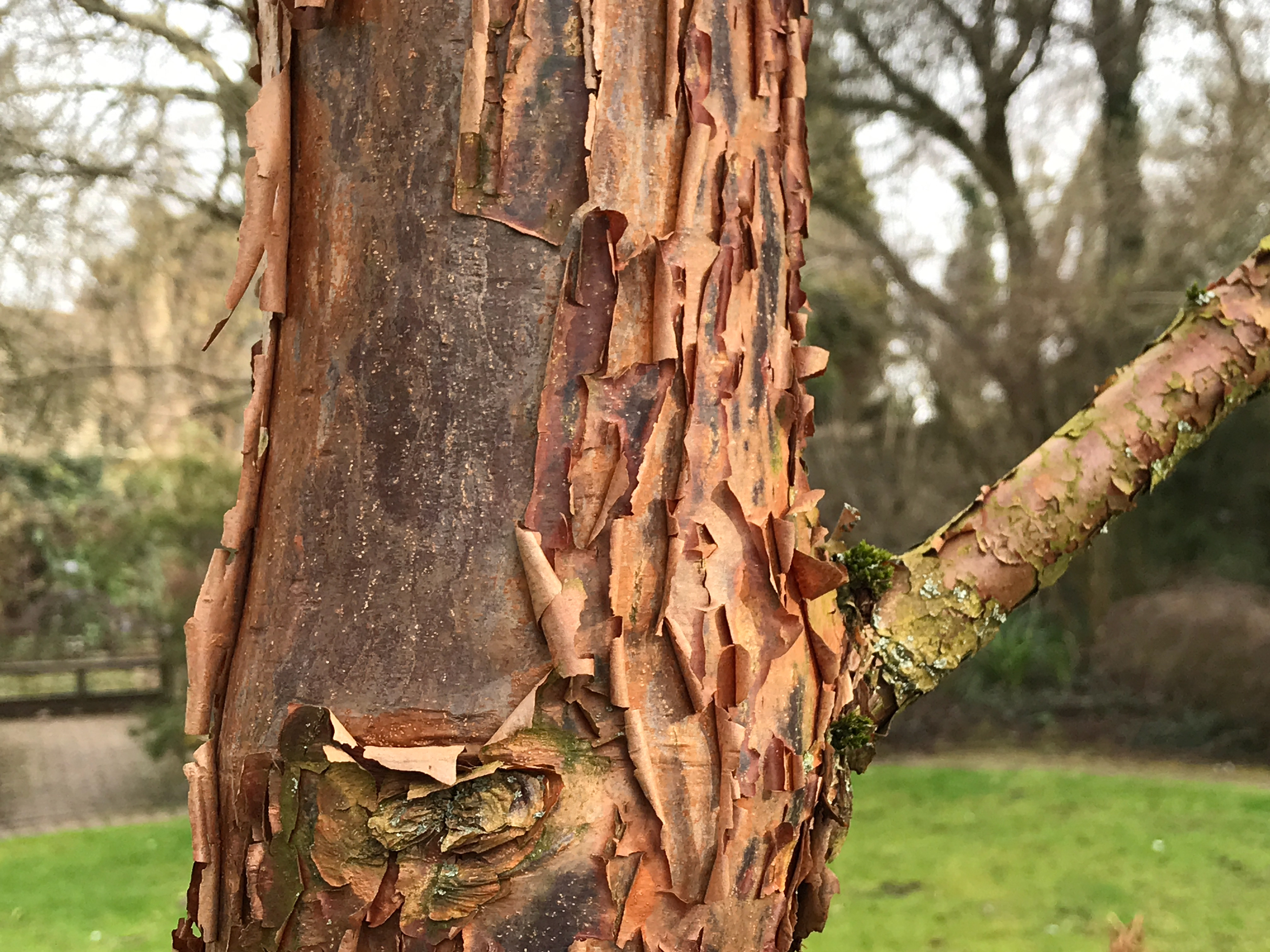
Acer griseum: A beautiful small tree, with cinnamon coloured, flaking bark. Purposely planted in the Wilson Garden so the peeling bark is backlit by the low winter sun. Introduced from China by Ernest Wilson in 1901. Acer griseum was first collected in 1892 by Père Paul Guillaume near Chengkou in Chongqing municipality. Based on Farges’s collection, Franchet (1894) described it as Acer nikoense var. griseum before it was elevated to a species by Pax (1902).
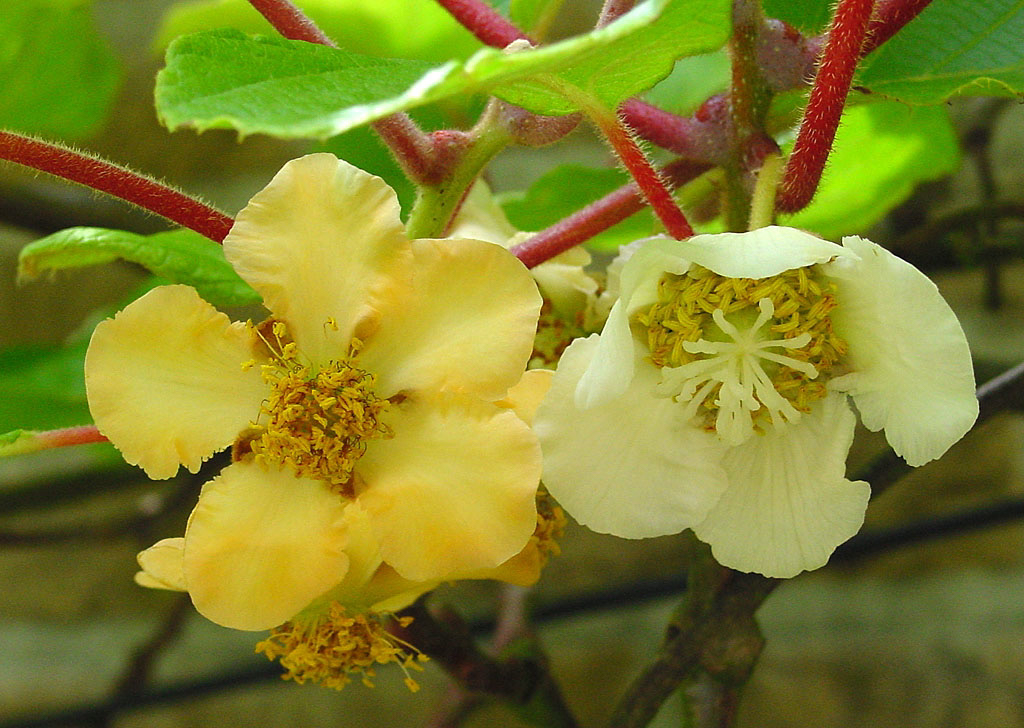
Actinidia chinensis (deliciosa): Commonly known as the Chinese Gooseberry or Kiwi Fruit, Wilson discovered this on his first expedition to China. It is well known for its delicious green fruit.
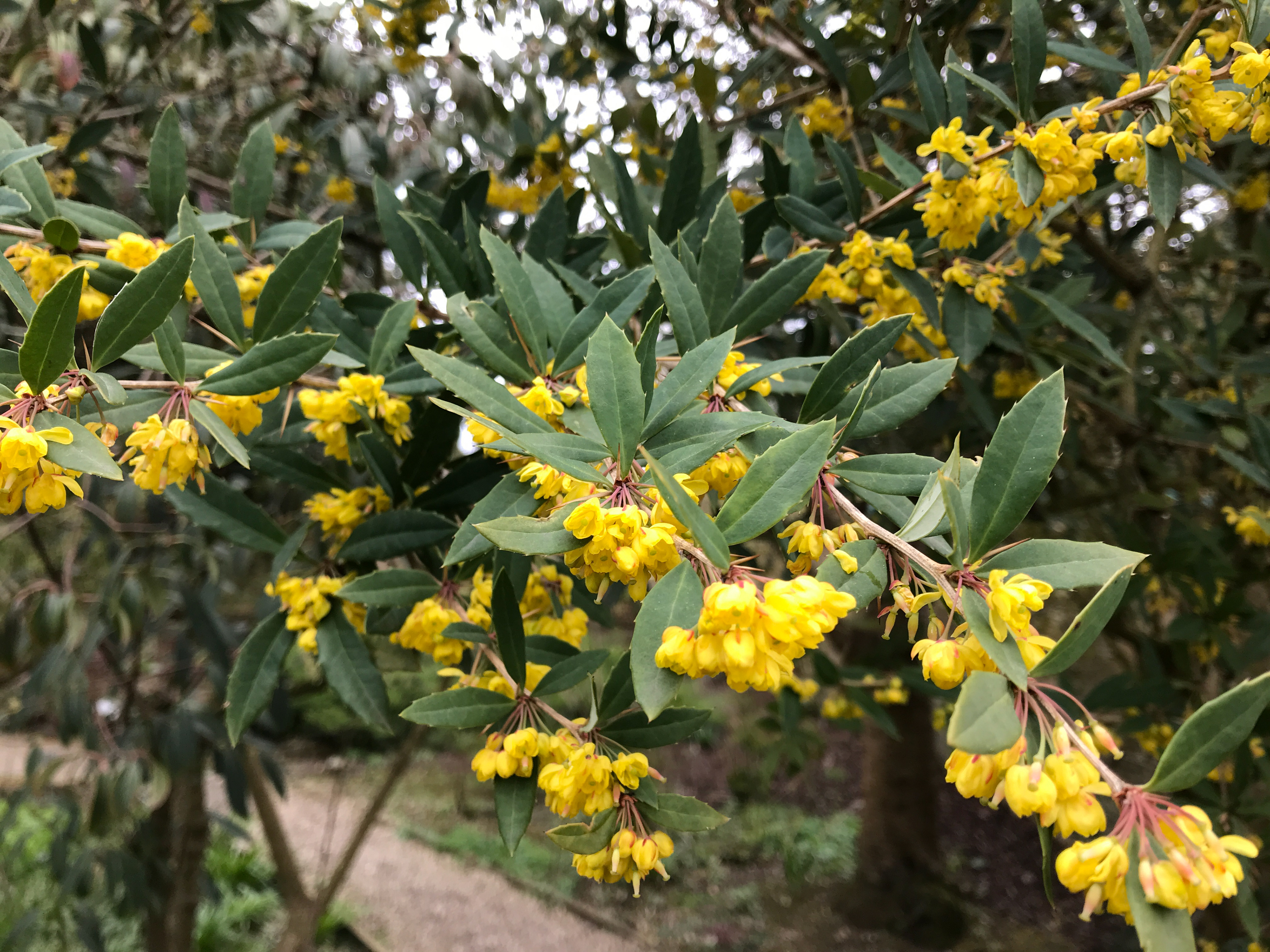
Berberis Kawakamii: A hardy evergreen plant with blue berries and yellow flowers which appear in May or June.
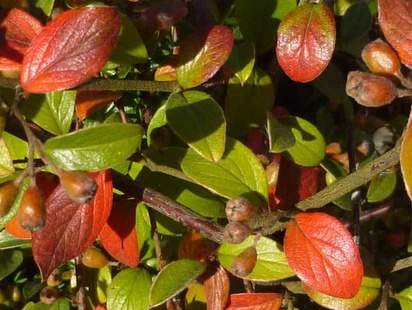
Berberis wilsoniae: One of the 20 species that Wilson introduced from China, this is the one that bears his name in honour of his wife. It was found at an altitude of about 2,500 metres in Western Sichuan in 1908. This is a most attractive shrub for the garden, with pale yellow flowers and translucent coral red berries in Autumn.
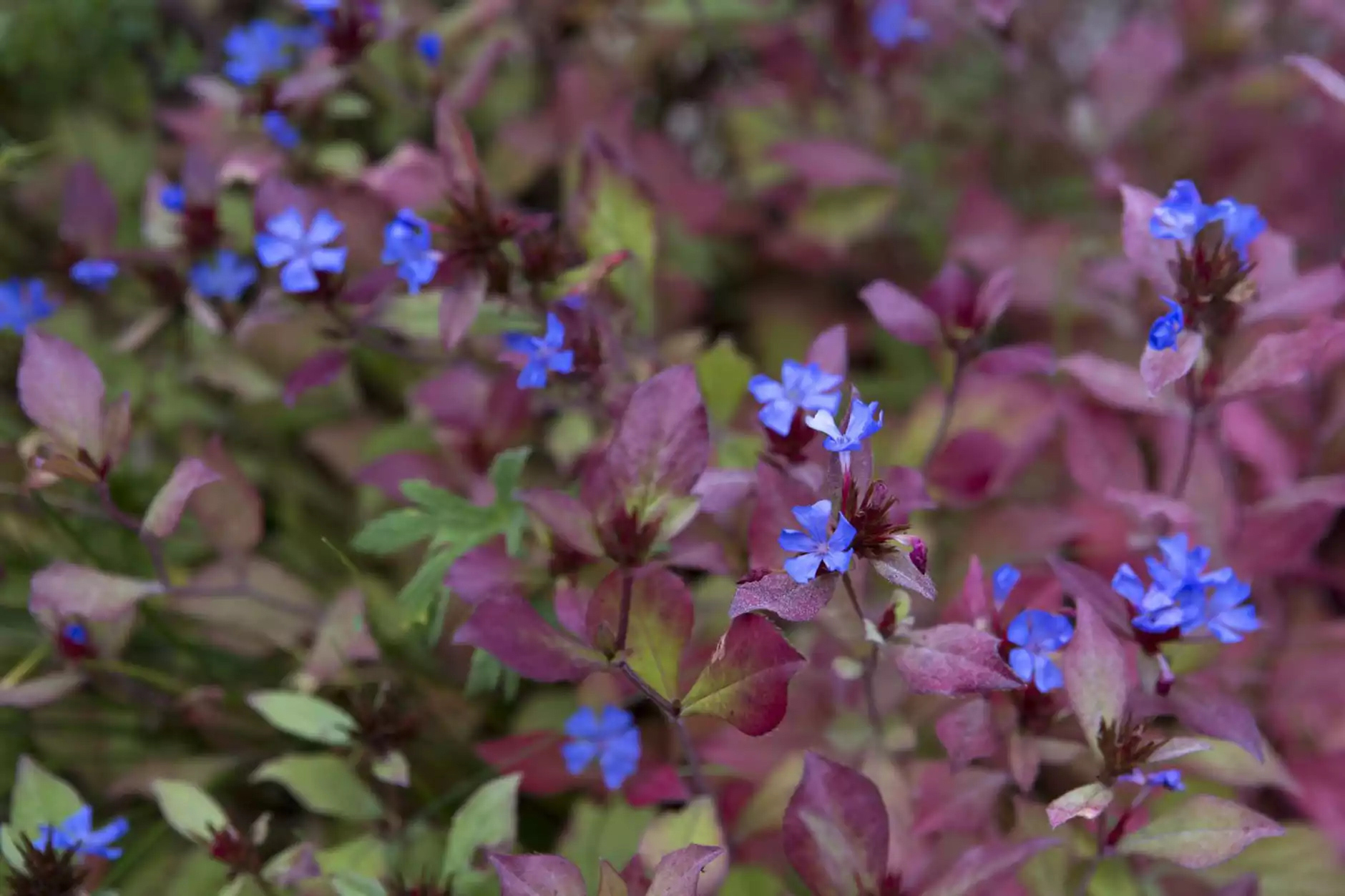
Ceratostigma willomottianum: The Chinese plumbago, Ceratostigma willmottianum, is a spreading, deciduous shrub with slender, bristly mid-green stems and green leaves with purple margins, which become bright red in autumn. From late summer to autumn it bears striking cobalt-blue flowers, when many other flowers have gone over.
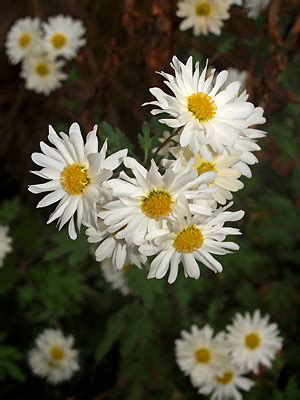
Chrysanthemum ‘E.H.Wilson’: Cream /white highly scented single flowers (6 layers of petals which are fetchingly twisted). Very wiry in habit. Introduced by Wilson, grown by Bill Archer and Miss Pole (founder members of HPS). Given to Bob Brown by Paul Pearl. Height 75cm, Sp. 50cm. The original plant was probably introduced by plant hunter Ernest Wilson when he was collecting for the Arnold Arboretum, but it is difficult to know when it arrived in Britain. It was evidently grown by Miss Pole, a key figure in the early days of the Hardy Plant Society, who helped to keep it in cultivation by giving plants to her gardening friends. Plants bear multi-headed stems with a profusion of highly scented, single flowers. With cream petals that twist slightly and yellow centres the flowers contrast well with the slender dark stems. This is a plant that will grow in most gardens in full sun or part-shade, flowering in October and November and like most hardy garden chrysanthemums is fairly disease free.
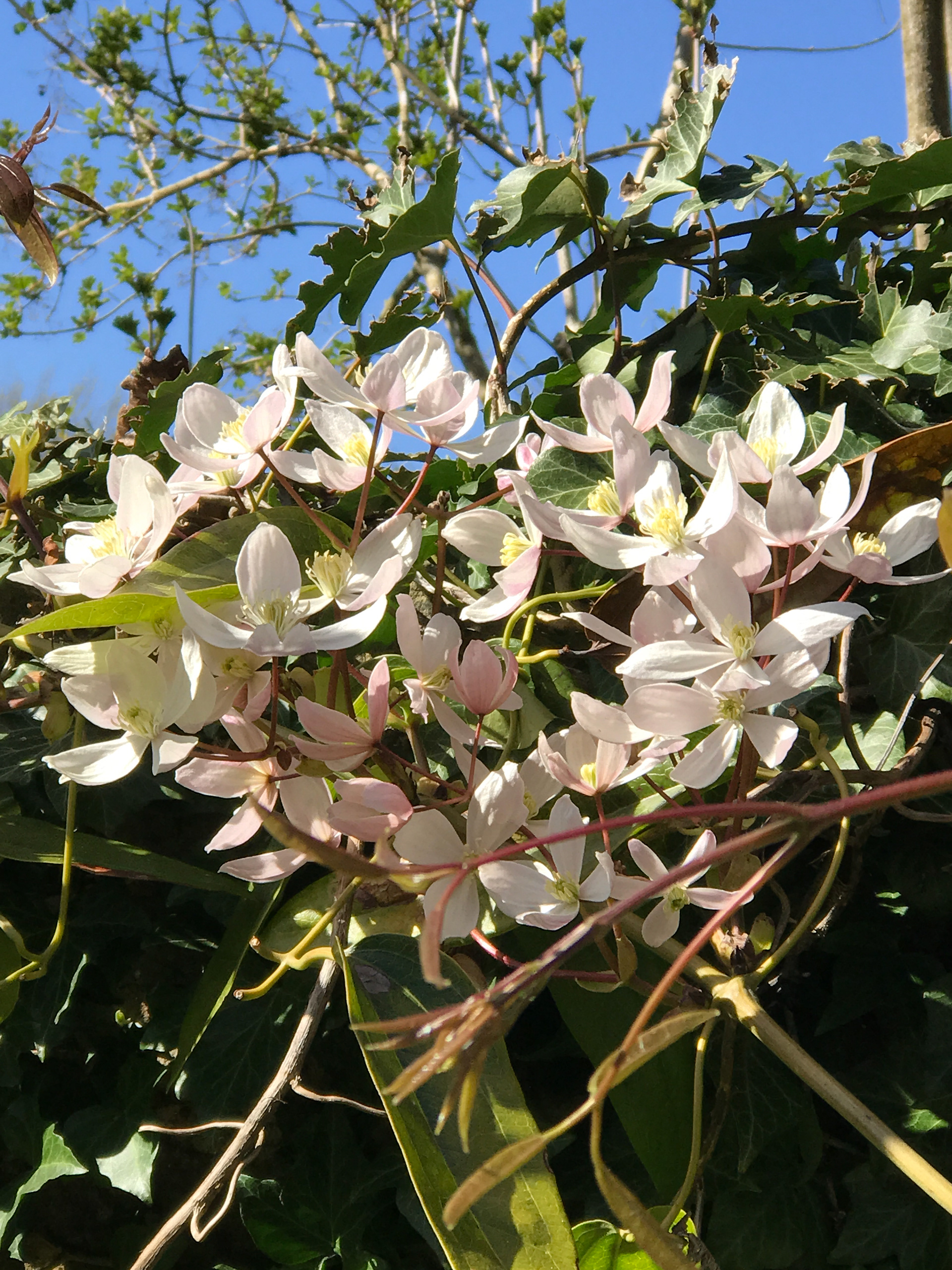
Clematis armandii is a large, vigorous evergreen climber with leathery, dark glossy green trifoliate leaves up to 15cm long. Single, fragrant creamy-white flowers 5-6cm across with creamy stamens, in clusters in early to mid-spring.
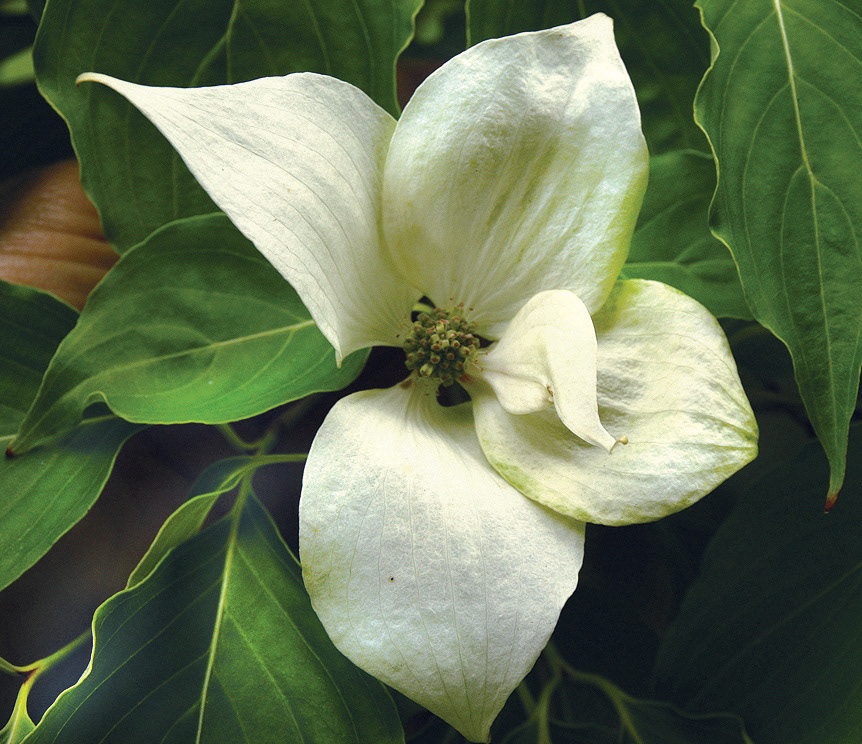
Cornus kousa: A small deciduous tree commonly known as the Chinese dogwood or Japanese dogwood. Ernest Wilson introduced this plant into Great Britain after it first went to The Arnold Arboretum in the United States at the end of the 19th century.
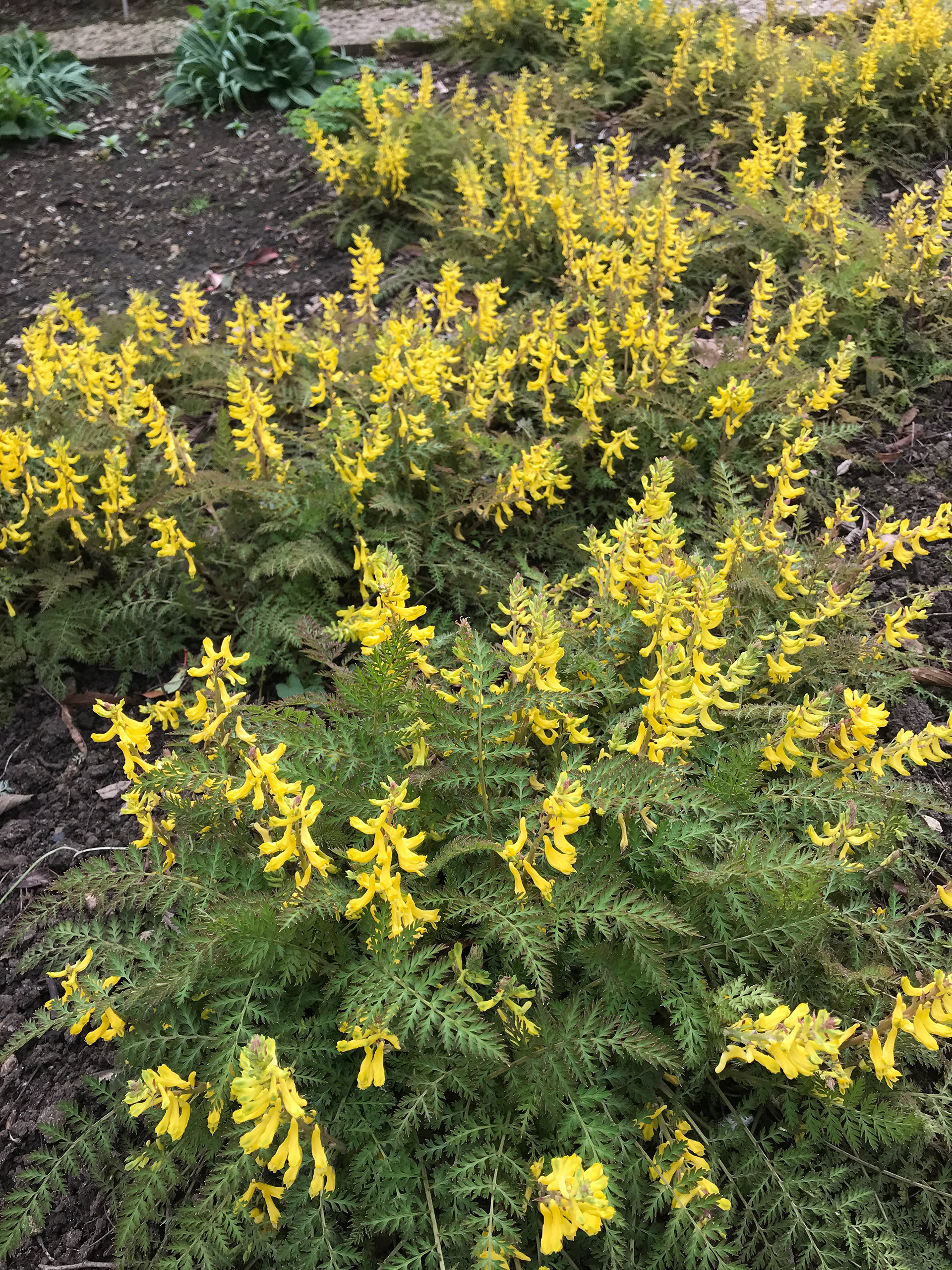
Corydalis cheilanthifolia: A very attractive, semi-evergreen species native to central China that is suitable for a woodland garden. Produces bronzy, finely dissected, fern-like foliage and tubular, yellow flowers from late spring into early summer. Although the plant is a short-lived perennial it will self seed. Height 20 cm. Moist, well-drained soil in part sun to part shade.
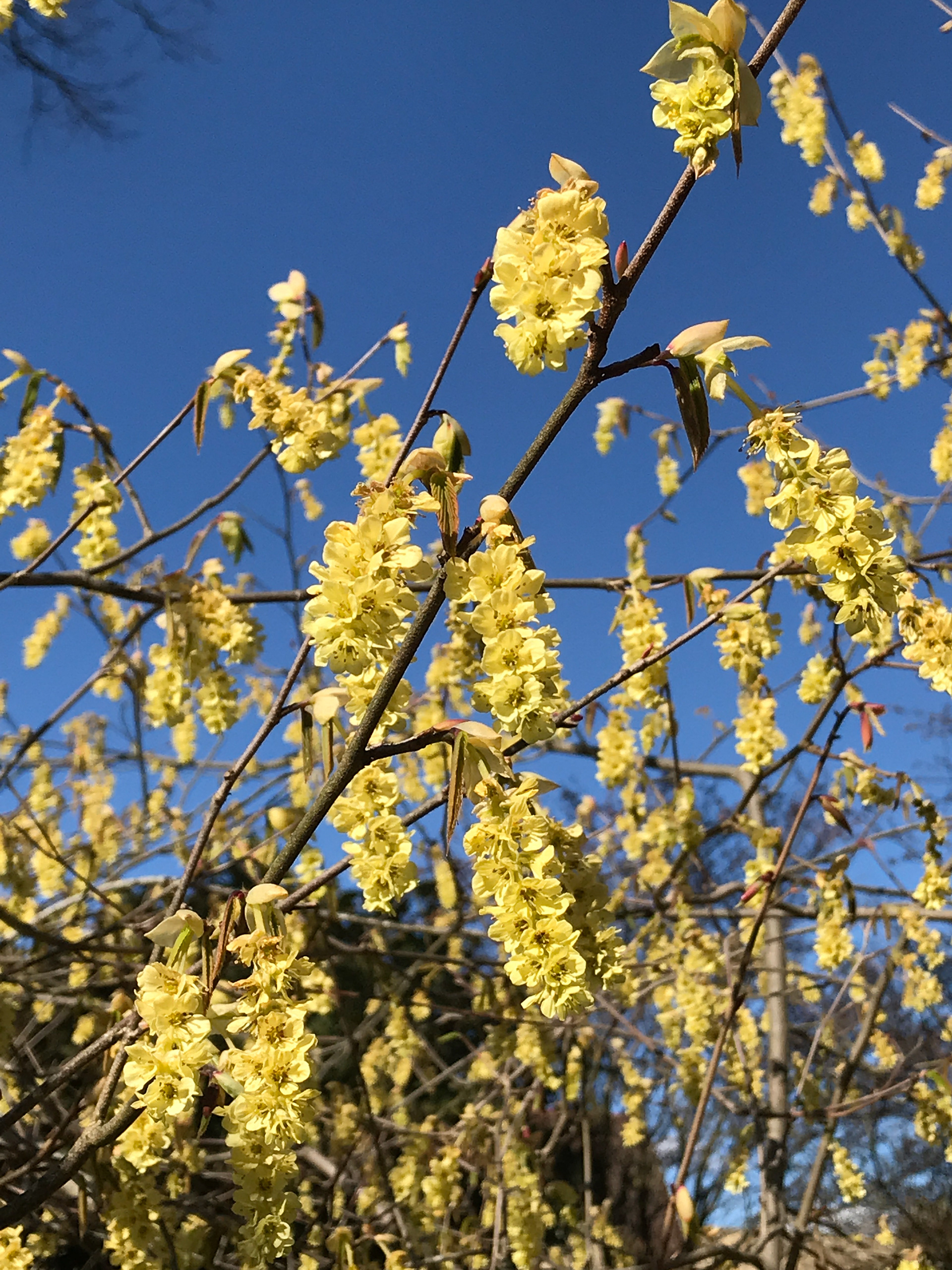
Corylopsis sinensis var. sinensis is a large deciduous shrub of spreading, open habit, with broadly ovate leaves sometimes tinged purple when young. Flowers light yellow, in dense, drooping racemes to 7cm in length.
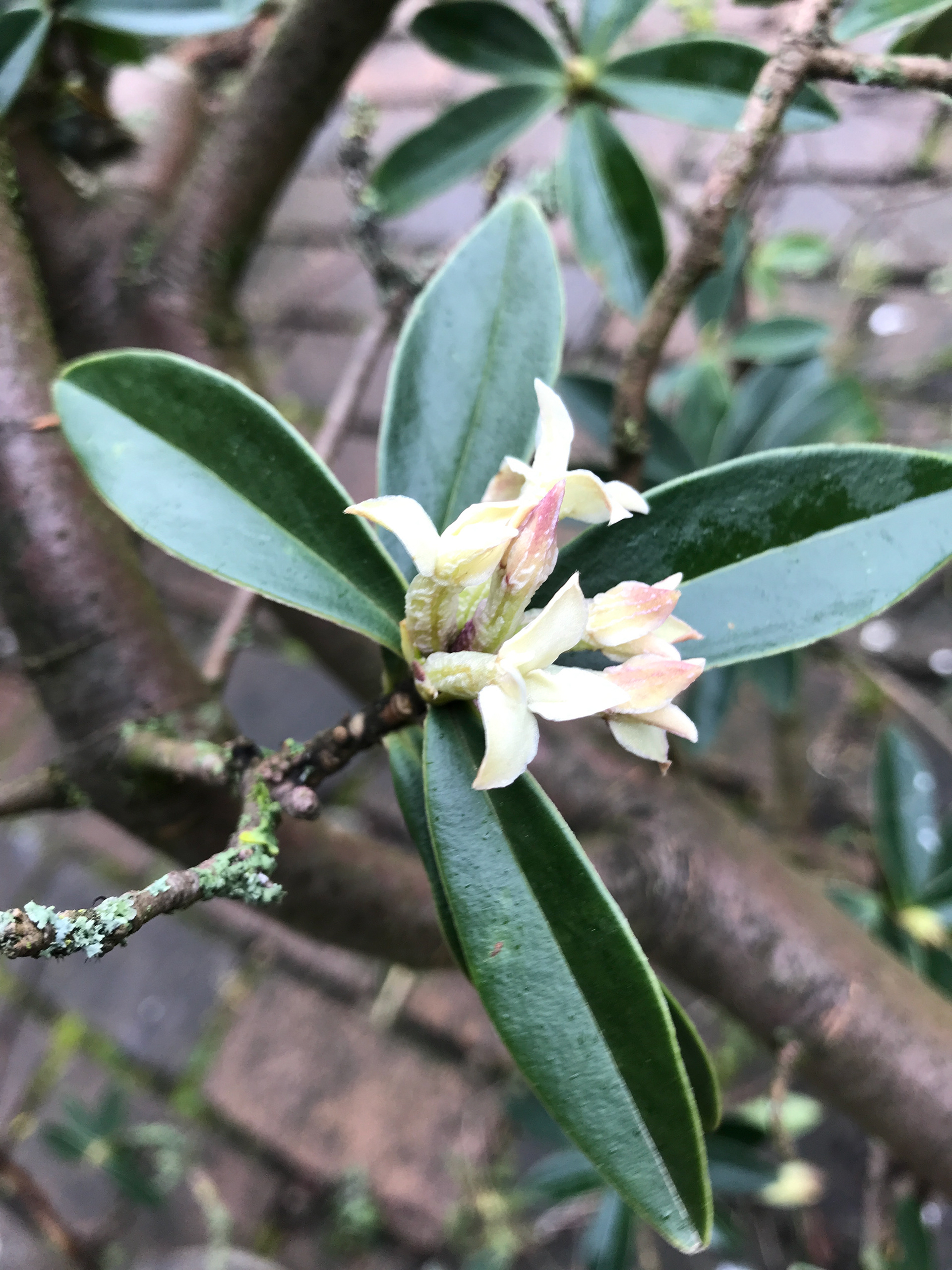
Daphne tangutica: An evergreen shrub of sturdy, rounded shape 3 to 5 ft high; Leaves leathery in texture; narrowly oval. Flowers closely packed in a terminal umbel opening in March or April. Native of W. China from Kansu to N. Yunnan; discovered by Przewalski, the Russian traveller, in 1873; introduced by Farrer (No. 271) in 1914 and also some four or six years earlier by Wilson from further south (plants from this seed were originally known as D. wilsonii).
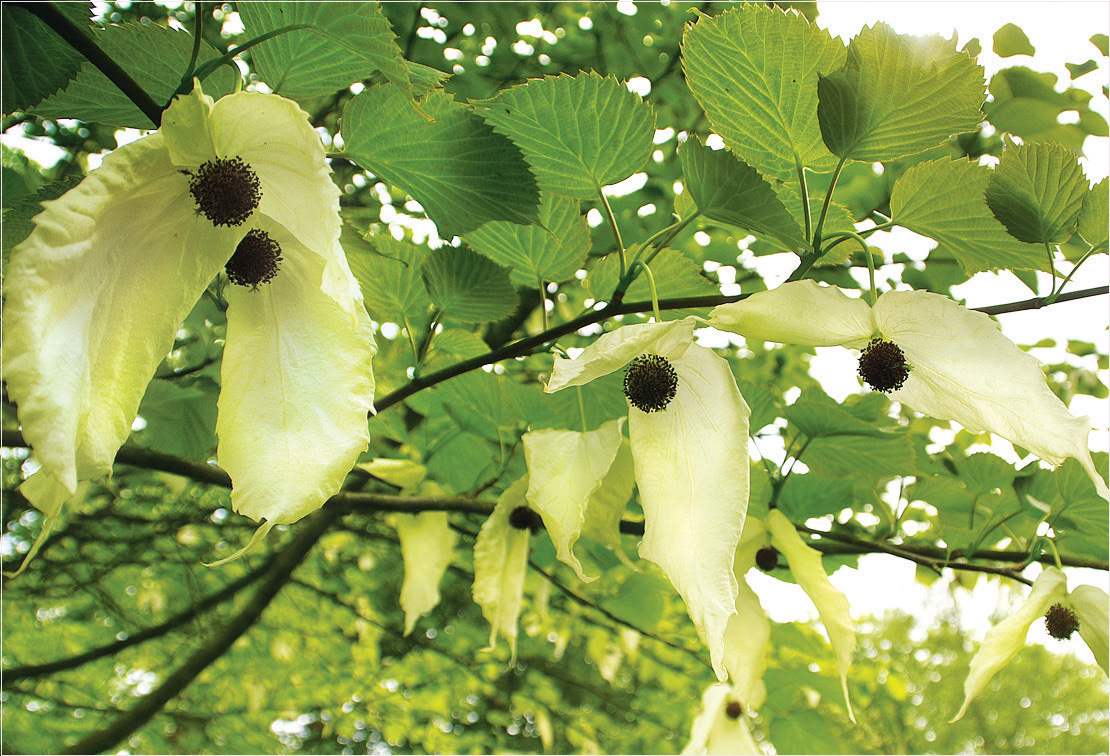
Davidia involucrate: The fabulous ‘Handkerchief Tree’ was one of Wilson’s first and most exciting discoveries. Finding the seeds of this tree was one of the prime objectives on his first trip for his sponsor James Veitch and Sons. His only clue to its whereabouts in a remote corner of China was a crumpled map drawn by Augustine Henry, with an ‘X’ marking the position of a single tree. When Wilson eventually reached the spot, all he found was a tree stump with a new wooden house built from its timber nearby. He eventually came across several in full flower, and was later able to collect a large quantity of seed. The tree is named after Abbe David who first discovered it in 1869, but it was from Wilson’s seeds that thousands of plants were eventually grown. The tree can grow up to 15m, with its distinctive double white bracts appearing in May.
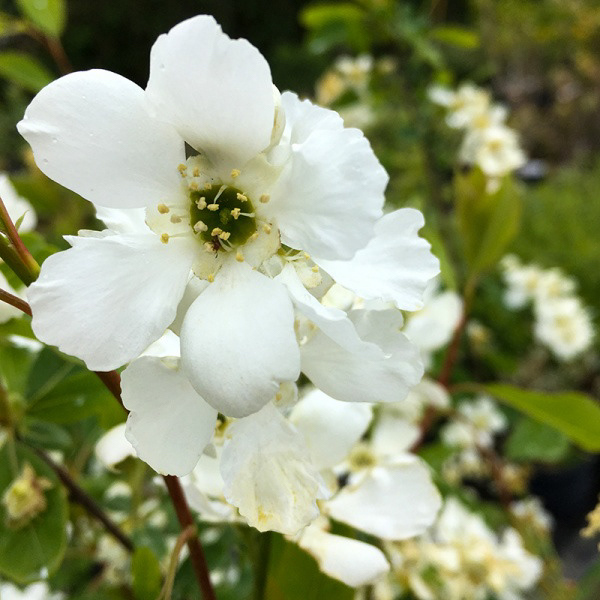
Exchorda giraldii var Wilsonii: Wilson's pearlbush, Wilson pearlbush, Excorda giraldii var. wilsonii is an upright to arching, deciduous shrub with obovate, toothed, light to mid-green leaves, flushed pink when young, and upright racemes of white flowers in late spring.
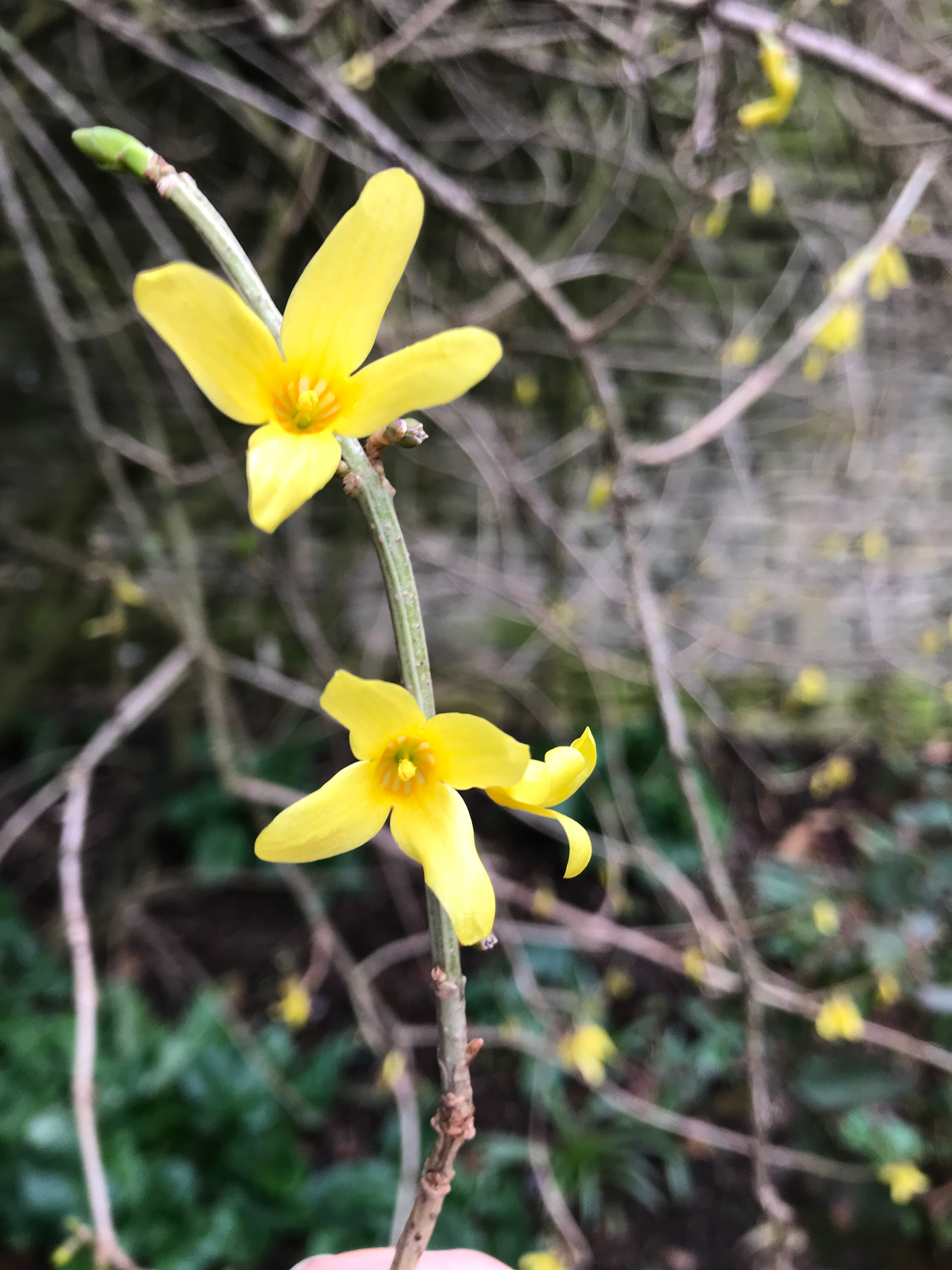
Forsythia ovato: A deciduous shrub normally not more than 5 ft in height. Leaves roundish ovate, with a short slender point and a rounded or slightly heart-shaped base. Flowers opening in March, bright yellow. The flowers are usually solitary, two at each joint. Native of Korea; introduced by Wilson in 1918 under his number 10456. It is usually in bloom in early March if the weather is mild.
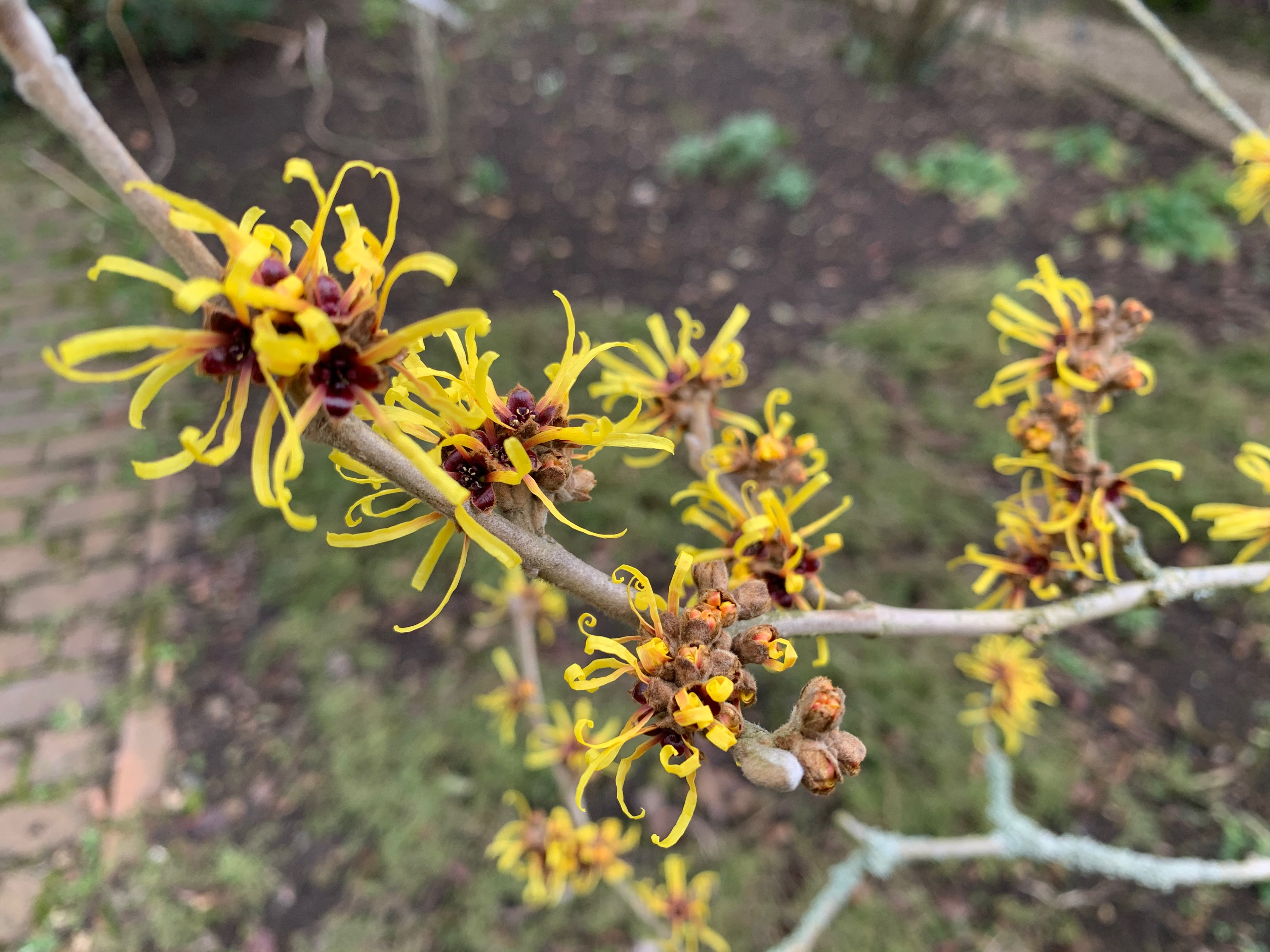
Hamamelis mollis ‘Jermyns Gold’: An attractive, erect variety of Hamamelis with rounded, softly hairy leaves. The clusters of large, sweetly-fragranced yellow flowers are borne from December to March. Originally collected by Ernest Wilson, it was named by Hillier Nurseries in 2000. Has the RHS AGM.
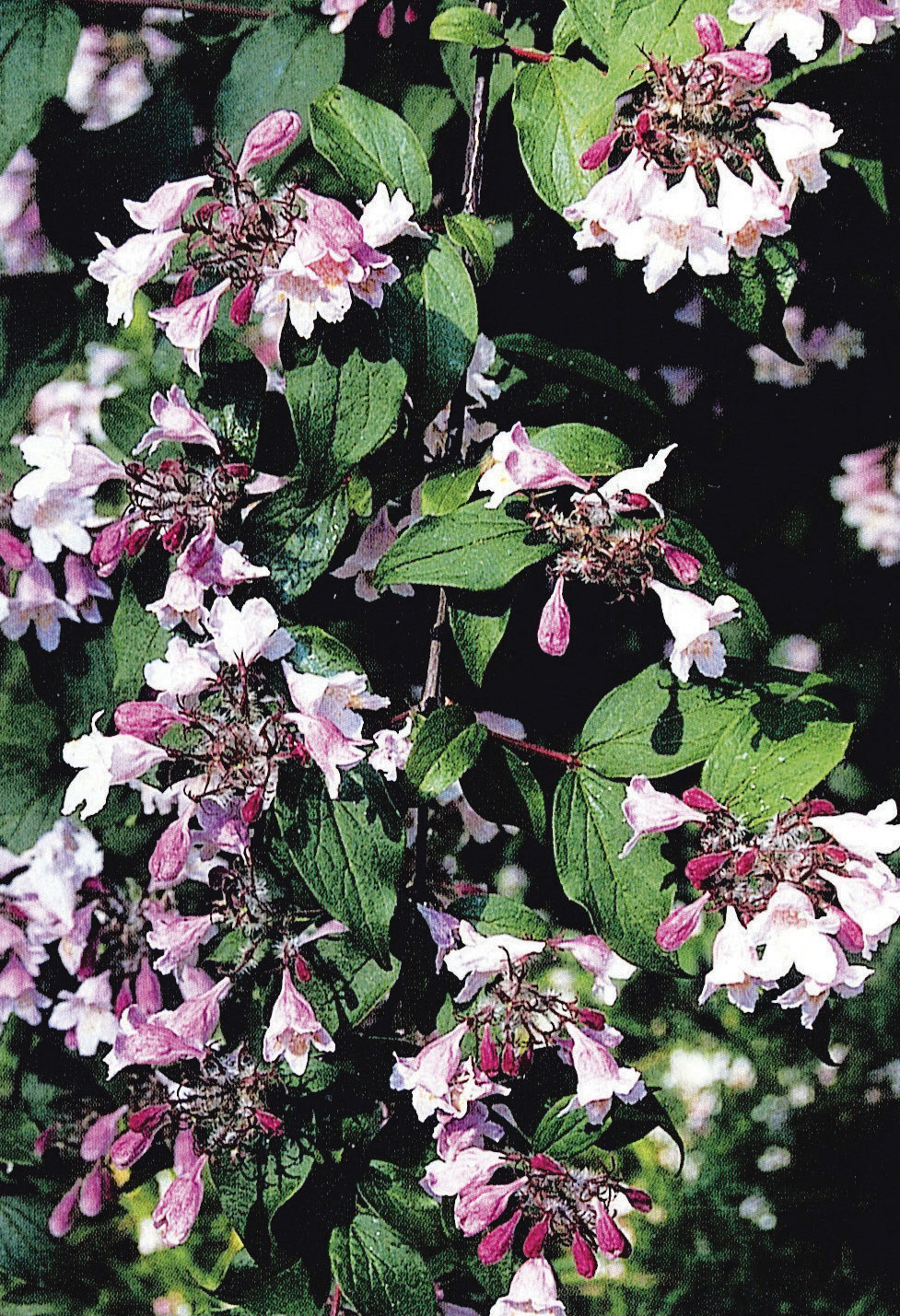
Kolkwitzia amabilis: Otherwise known as the Beauty Bush, this shrub is well named. Reaching 2-3m it produces an abundance of pink bell-shaped flowers in clusters of about 7cm across in mid summer.
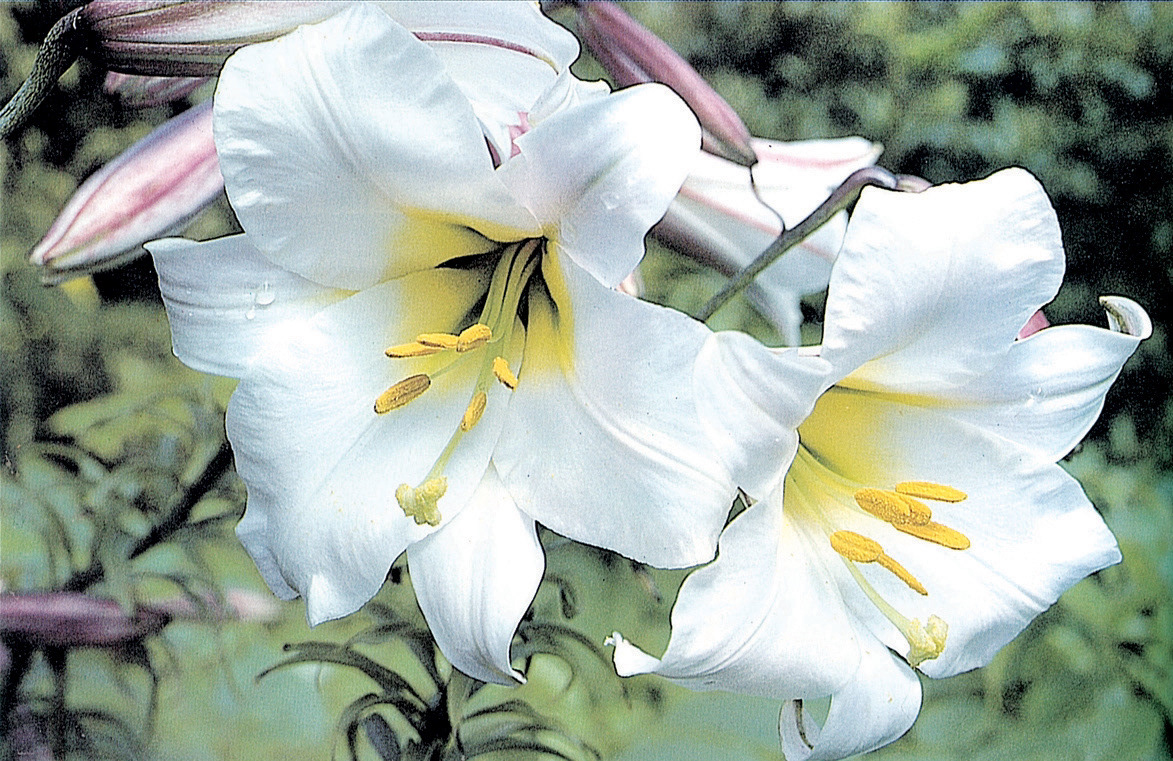
Lilium regale: One of Wilson’s most exciting discoveries was the sight of these fragrant flowers growing wild in the Min River Valley in 1903. On returning from the lily fields the party was involved in a terrible landslide when Wilson’s leg was badly broken, so that for the rest of his life he walked with what he called his “lily limp”. This beautiful but easy to grow lily must be one of his most important introductions. It has white trumpet-shaped flowers with a yellow throat, flushed with maroon on the outside.
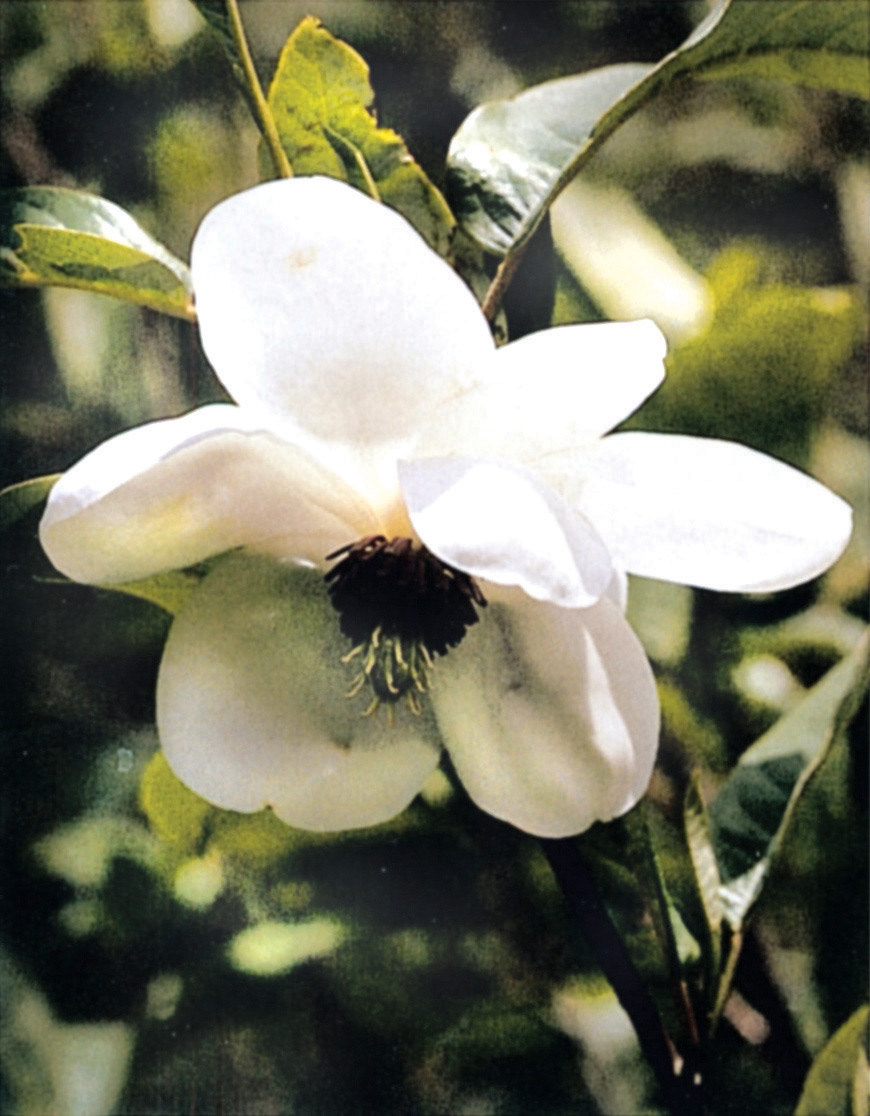
Magnolia wilsonii: One of seven species of Magnolia that Wilson introduced, he found this one in 1904 growing in the thickets of Western Sichuan. One of the most beautiful of the Magnolias, with white cup-shaped flowers with bright red stamens and carpels. The fragrant blossom appears in May and early June.
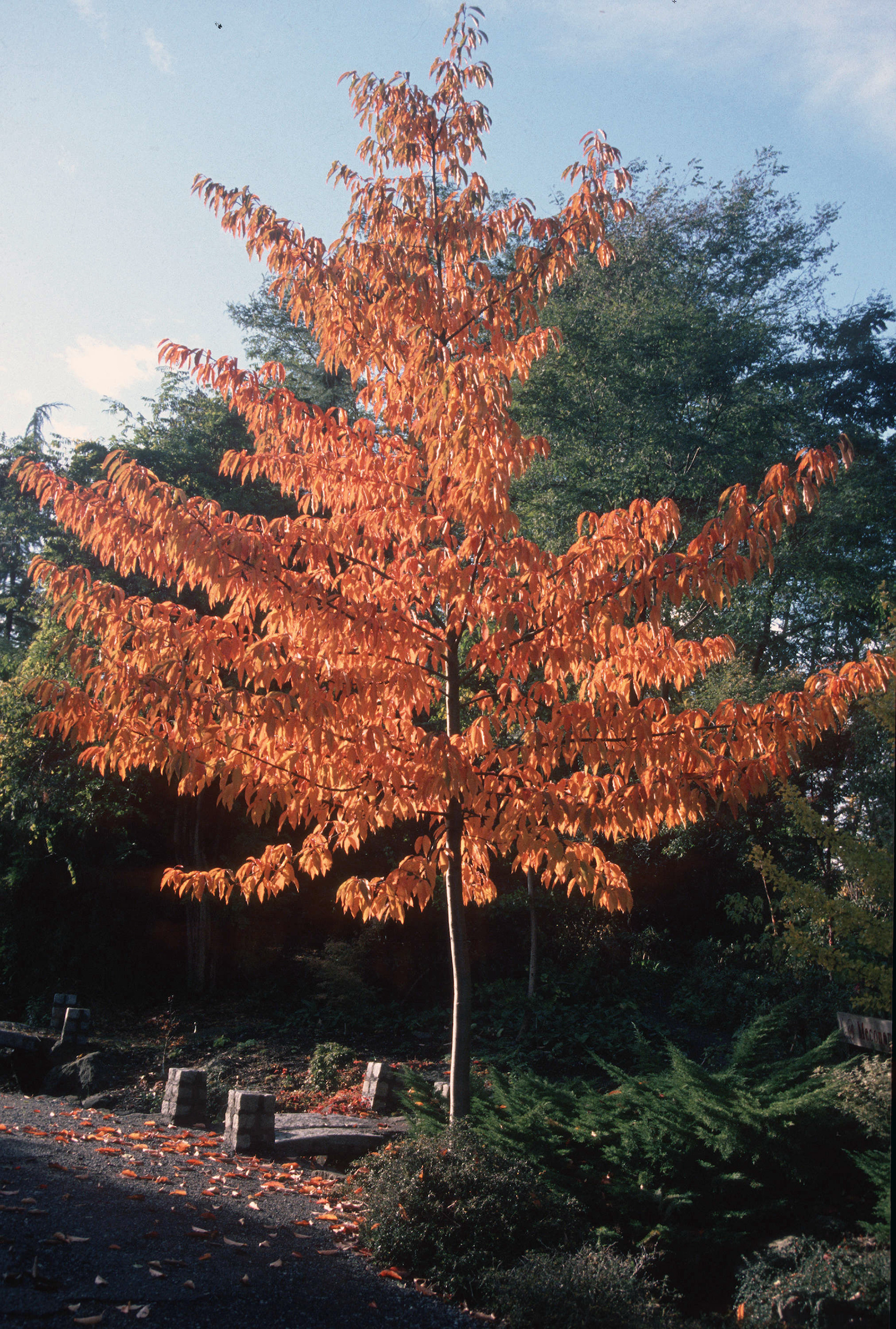
Nyssa Sinensis: Nyssa are deciduous trees with ovate leaves colouring brilliantly in autumn; inconspicuous flowers are followed by small, dull purple fruits. N. sinensis is a spreading deciduous tree or large shrub to 10m, with narrowly-ovate leaves to 15cm in length, bronze when young and turning to yellow and red in autumn.
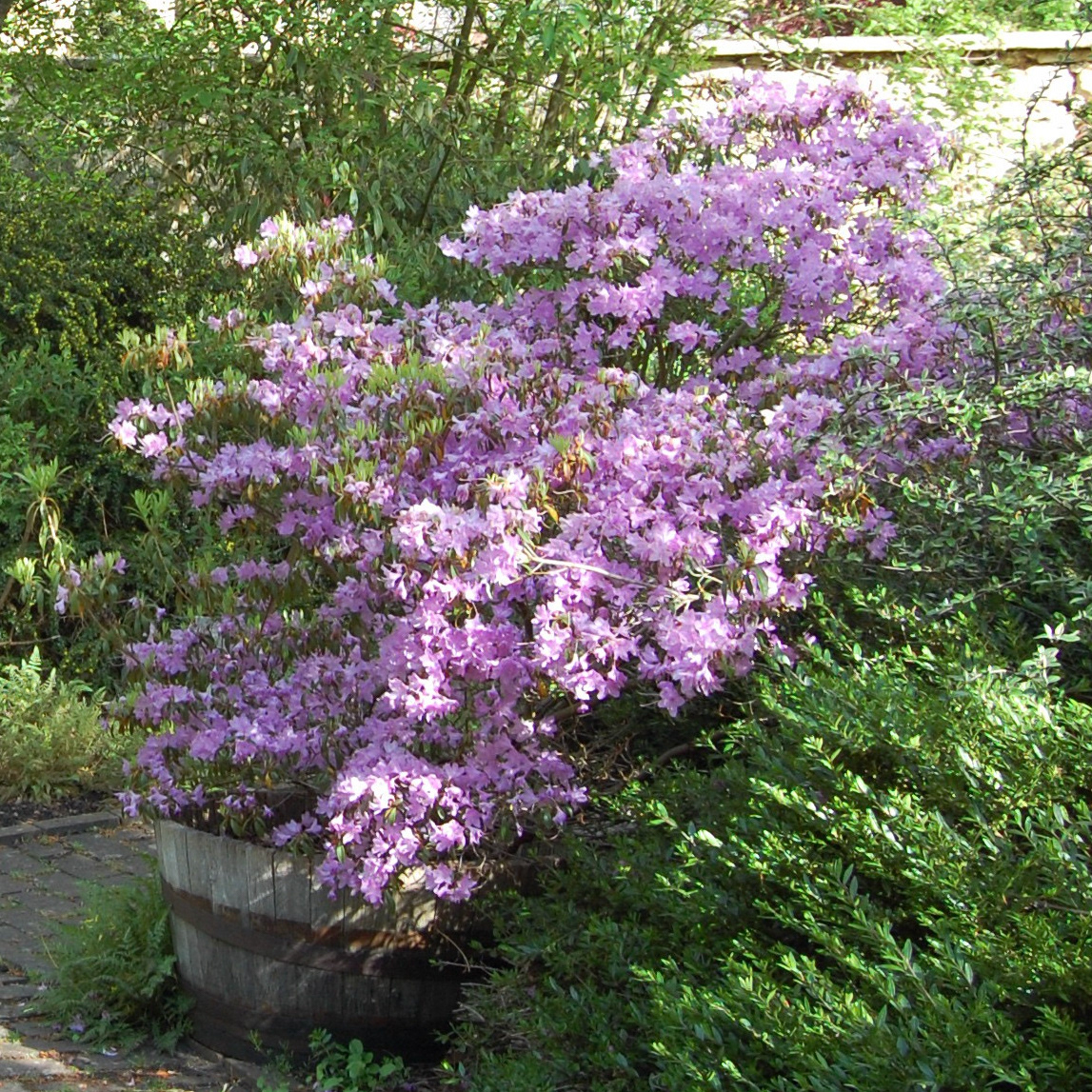
Rhododendron davidsonianum: Is endemic to China’s Sichuan province, where it grows in coniferous forests, open forests, and thickets at elevations between 1500-3600m. Named after a missionary doctor, Dr. W. Henry Davidson who, in 1910, was stationed in the western part of China’s Sichuan province and administered treatment to Wilson when he was injured. Wilson later named this rhododendron in his honour.
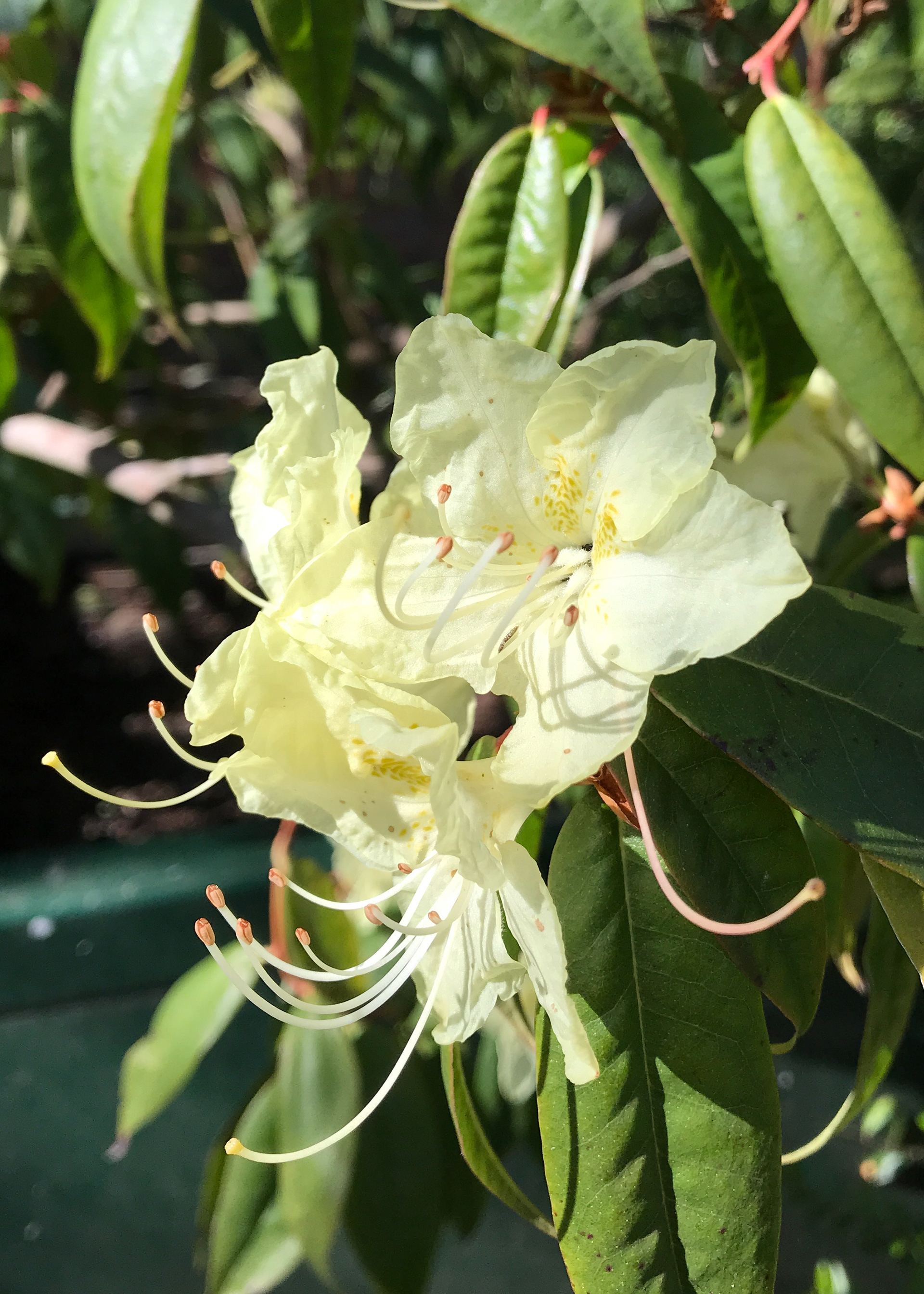
Rhododenron lutescens: Introduced in 1904 this broadleaf evergreen shrub grows to 1-2m with loose, upright habit, stems and branches with smooth, brown, flaking bark. New growth is bronzy. Flowers pale yellow, singly or in pairs.
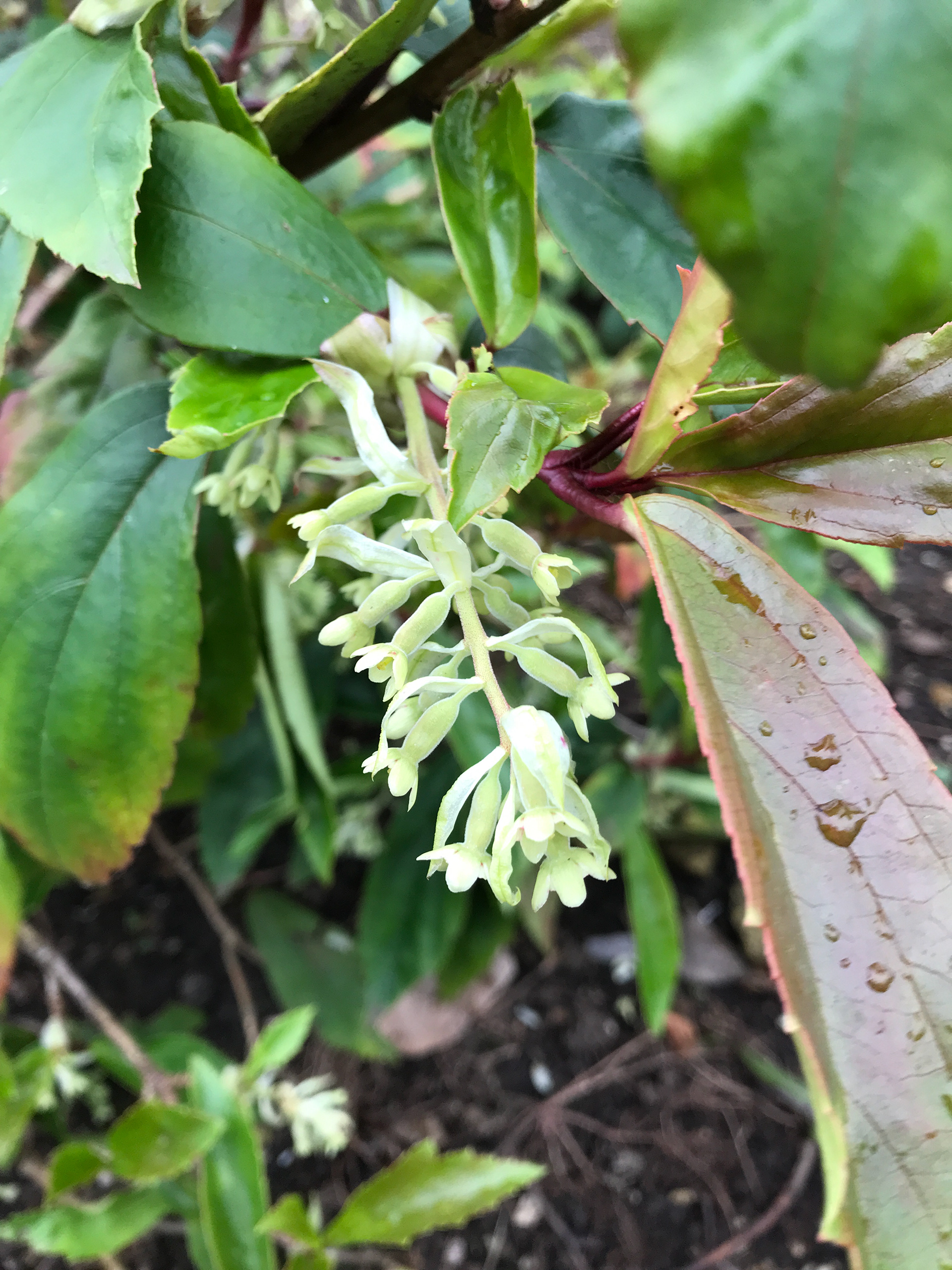
Ribes laurifolium: Wonderful for ground cover as it will happily spread, this Ribes Laurifolium is a hardy evergreen shrub with dark rich green foliage and bell-shaped cream flowers. Blooming from pendant racemes, flowers will appear in spring and red-black berries will follow in the Summer. Hardy and not fussy on soil, this is a great addition to any garden. Prefers full sun to partial shade.
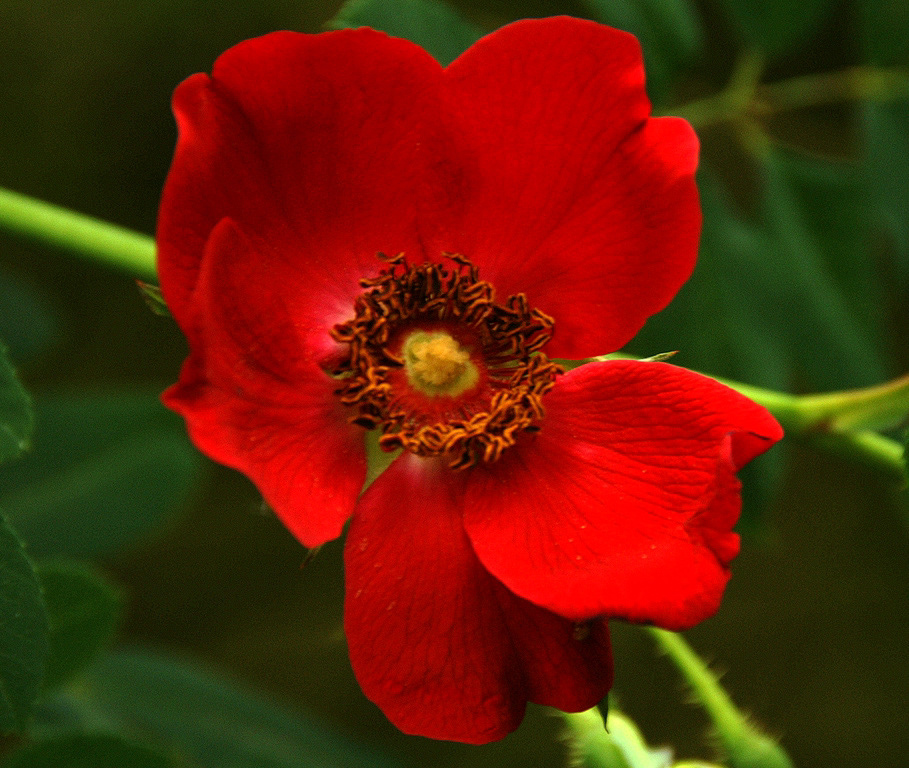
Rosa moyesii: Sent from China by Wilson. Single crimson-red blooms with creamy stamens produced on a large shrub. Ornamental flagon-shaped hips in autumn. Summer flowering. Size: 3m x 2.4m. Wilson named it as a compliment after Rev. James Moys (1876 - 1930) of the China Inland Mission.
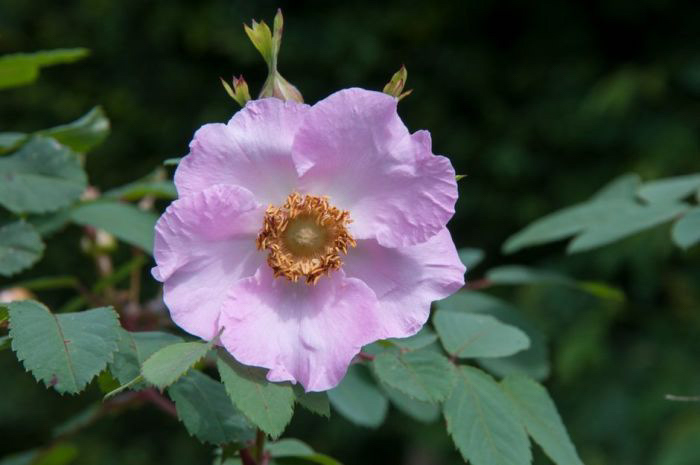
Rosa setipoda: Can be deciduous or semi-evergreen shrubs or scrambling climbers, with usually thorny stems bearing compound pinnate leaves and solitary or clustered flowers. Flowers may be followed by showy red or purple fruits in some varieties. R. setipoda is a large shrub with strong, upright, few-thorned stems to about 3m tall. The leaves have up to nine leaflets and are sweetly aromatic. Clear pink, single flowers, 5-6cm across, with purple stalks, are produced in loose clusters in mid-summer, followed by large, flagon-shaped, red hips.
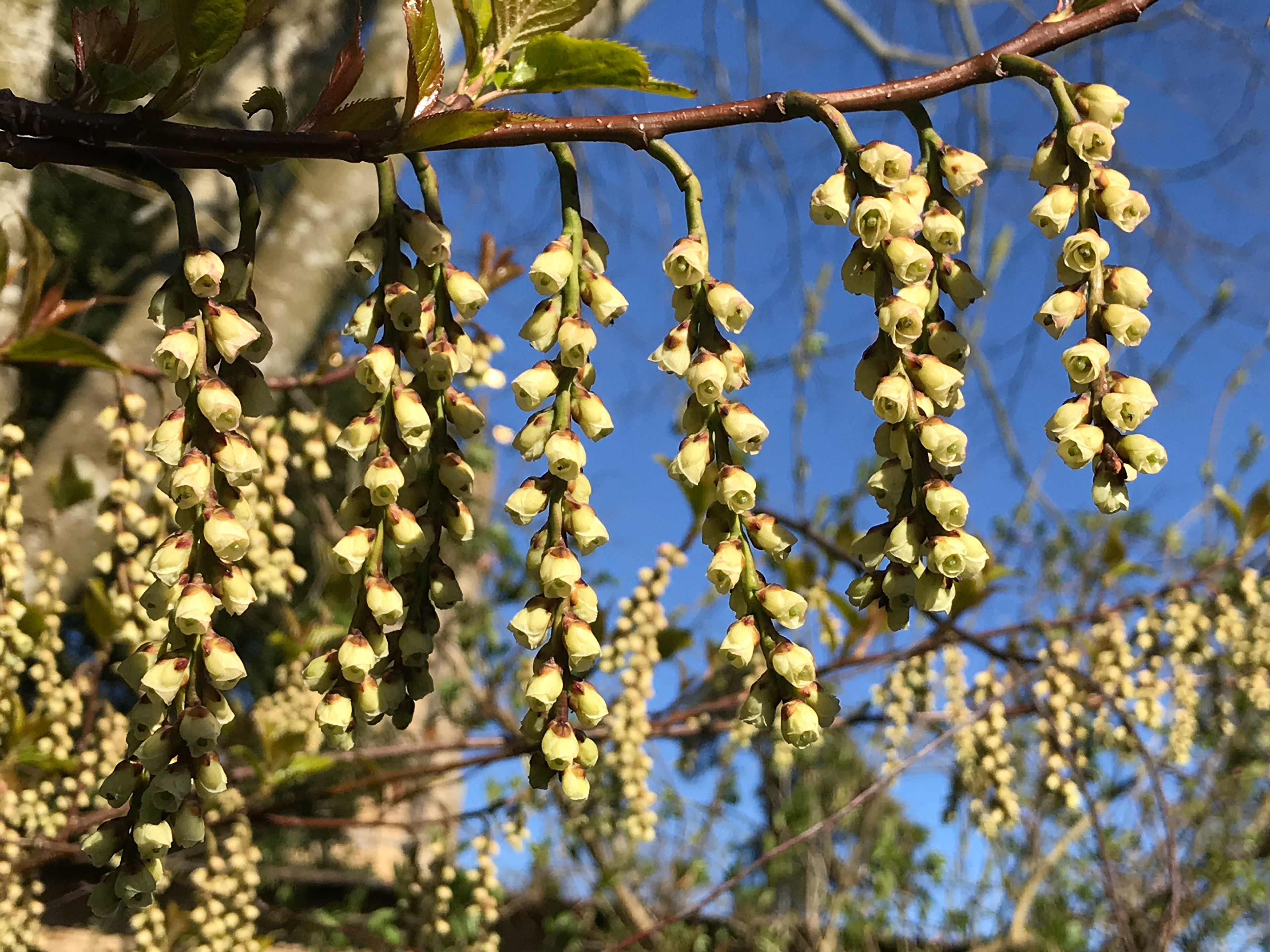
Stachyurus chinensis: a medium to large-sized shrub with a spreading habit and purplish young branches. It bears stiff, particularly long hanging racemes of pale yellow cup-shaped flowers. The green leaves are broad, narrowing to a tapering point, and show good autumn colour.
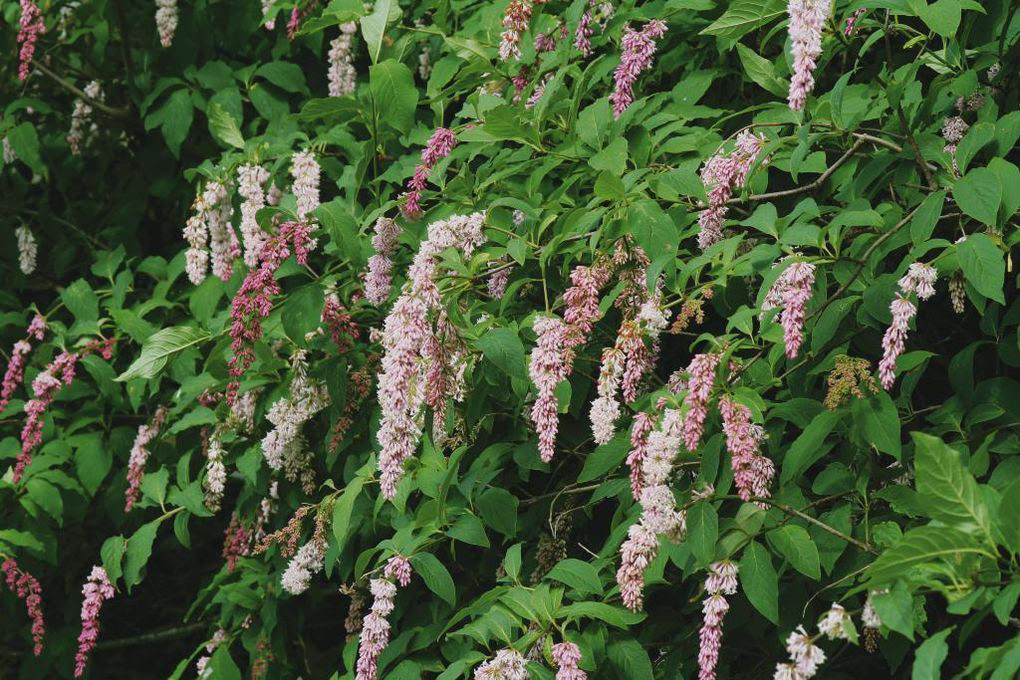
Syringa komarowii subsp. reflexa: Is a vigorous, upright, deciduous shrub with elliptic to oblong, dark green leaves and slender, nodding panicles of purple-pink flowers in late spring and early summer.
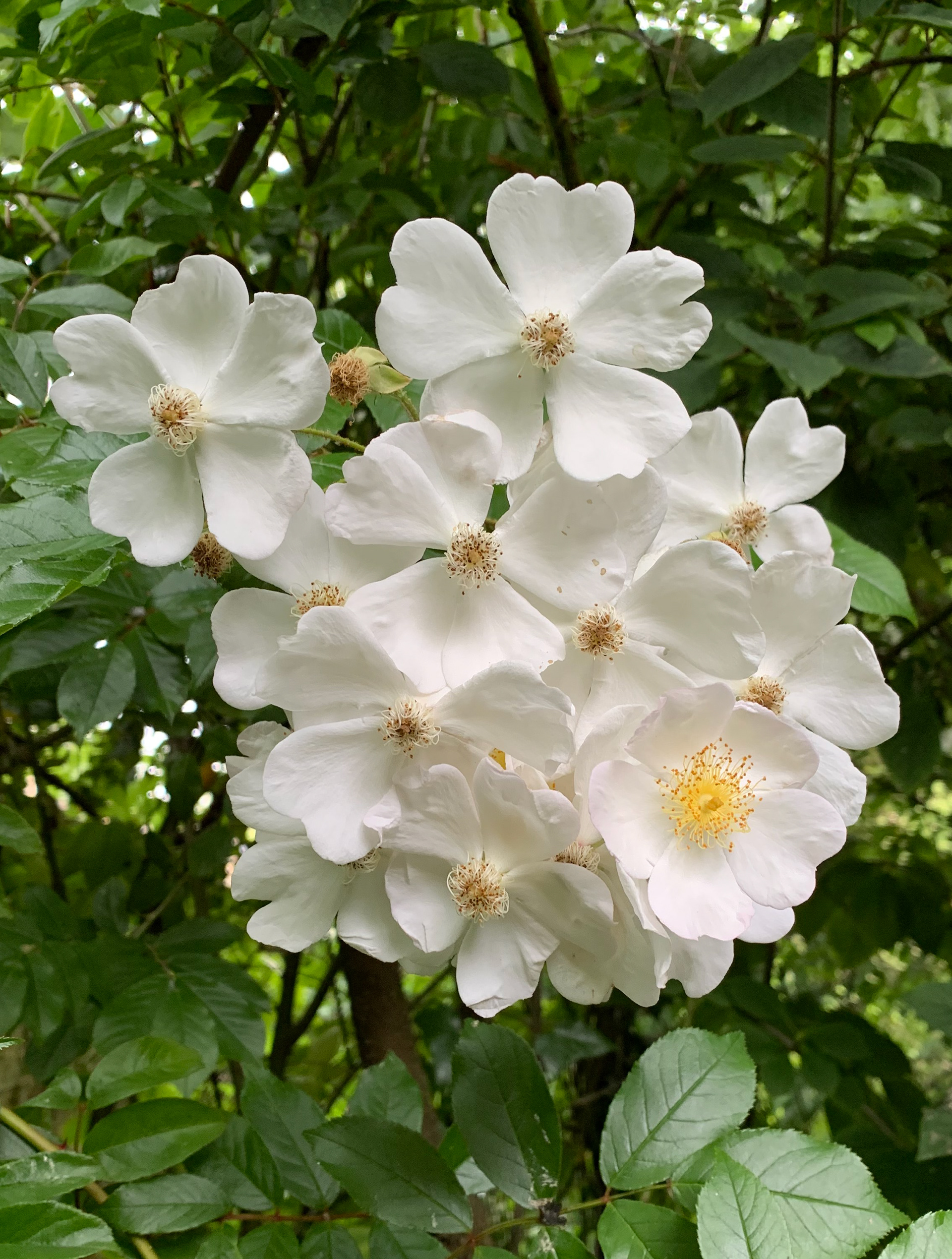
R. longicuspis var. sinowilsonii: is a semi-evergreen, rambling rose, up to 6m tall, with vigorous stems that are reddish-brown when young. Its large leaves, up to 20cm long, are made up of five or seven corrugated leaflets coloured a dark, glossy green with purple tints on the undersides. White flowers, up to 5cm across, are borne in small sprays in summer and followed by red hips.
Not all the above photographs were taken in the Wilson Garden but we hope to replace them as we take more photographs through the seasons.
